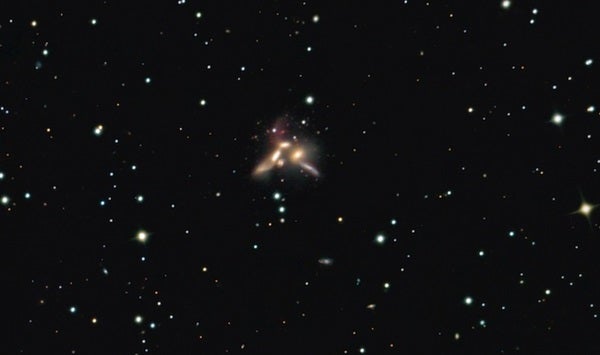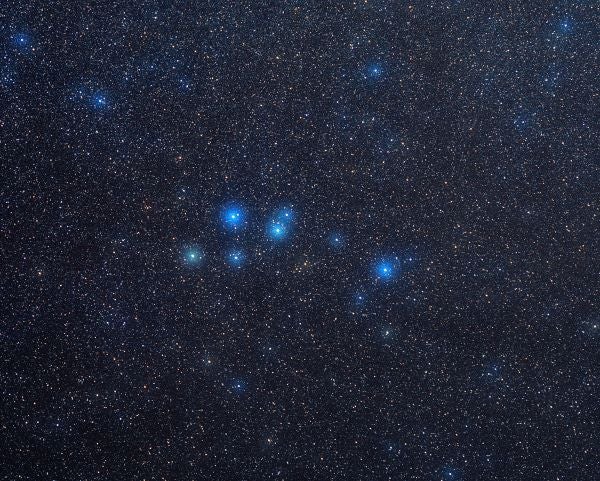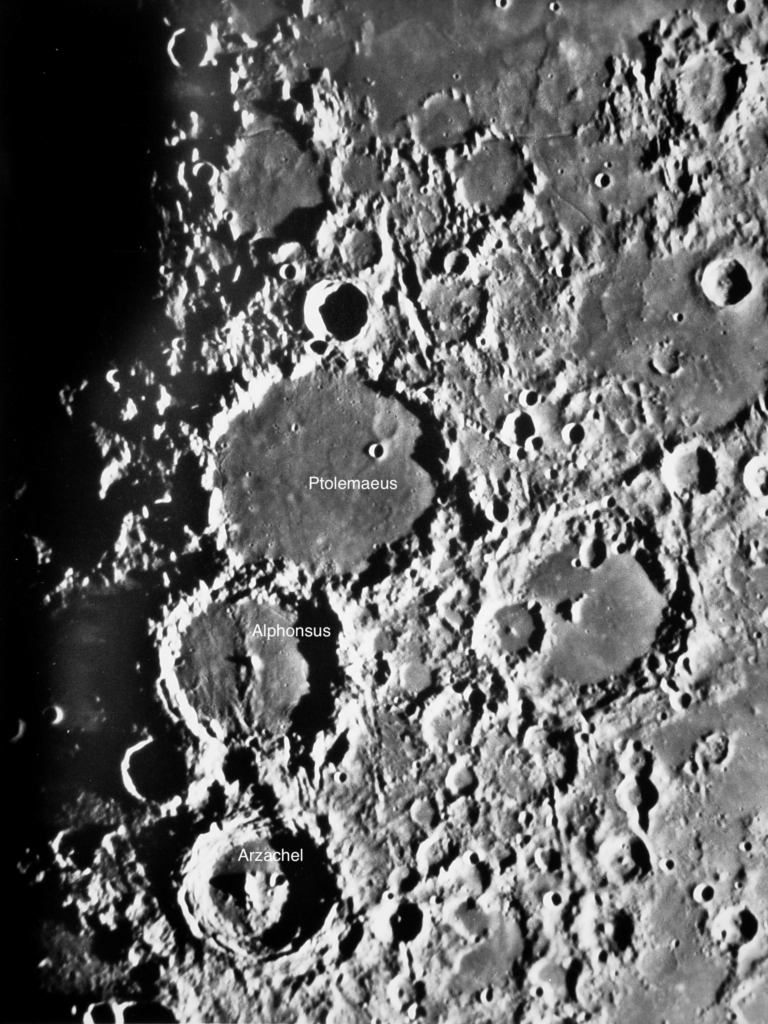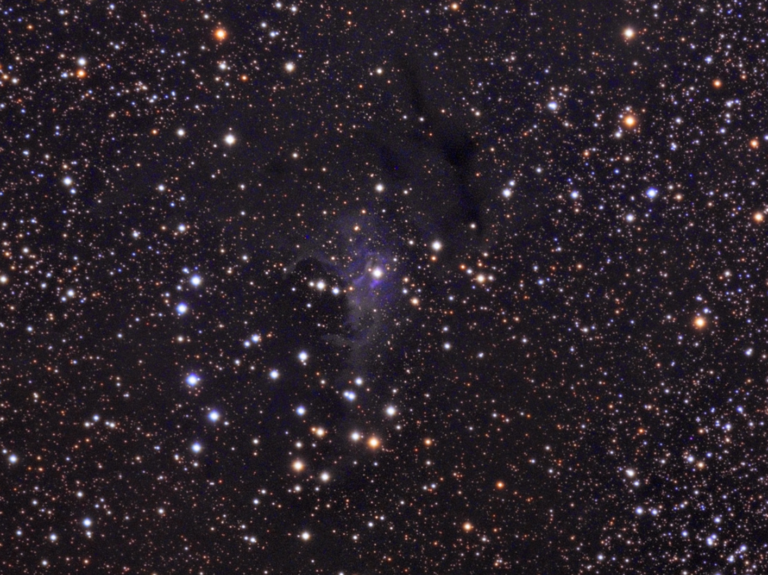Located in Serpens Caput, a constellation with few deep-sky objects, Seyfert’s Sextet was one of the first compact galaxy groups ever noted. That occurred in 1948, when astronomer Carl Seyfert discovered that the previously cataloged NGC 6027 was actually more than one object. His Sextet became the densest group of galaxies known at the time.
Seyfert’s initial observation described six galaxies close together, but that isn’t the case. Later observations revealed only four interacting galaxies (NGC 6027 and NGC 6027a, b, and c) at a distance of 190 million light-years. A fifth galaxy, NGC 6027d, is actually 410 million light-years behind the group. And the sixth galaxy isn’t a galaxy at all — it’s a plume of stars generated by interactions between NGC 6027 and NGC 6027a. The galaxies have diameters that range from 0.9′ to 0.2′.
The four physically associated members are galactic Lilliputians. Astronomers believe the entire group would fit inside the width of the Milky Way, some 100,000 light-years. Three share a common halo that in most galactic collisions would generate new star formation, but not here. Perhaps this means that within the next several billion years, the galaxies might merge and form a large elliptical galaxy.
Edouard Stephan discovered NGC 6027 in 1882, but didn’t resolve the others. This highly inclined barred lenticular galaxy is the group’s brightest member at magnitude 14.7. NGC 6027a is magnitude 14.9. Perhaps the dark lane of this Sa peculiar spiral dims it a little. It’s a tiny version of the Sombrero Galaxy (M104). NGC 6027b is similar in size and nature to NGC 6027 but is a more challenging magnitude 15.3. NGC 6027c is by far the group’s faintest member at magnitude 16.7. It’s a highly inclined SBc or SBd galaxy. Hubble photos show it is rich in young blue stars but poor in HII regions. Beyond the true group, NGC 6027d is a giant face-on barred spiral more than 800 million light-years away. At magnitude 16.5, it’s a challenge.
Observing Seyfert’s Sextet requires a large telescope. You might glimpse it in a 13-inch telescope under excellent skies, but resolving members requires more aperture, magnification, and a very steady atmosphere.
Make sure to explore Astronomy’s full list of 101 cosmic objects you must see. New entries will be added each week throughout 2022.
To get the latest astronomical news and observing content delivered directly to your door, subscribe to Astronomy magazine today!










